- Home
- Alistair Moffat
The Secret History of Here Page 11
The Secret History of Here Read online
Page 11
16 March
More late winter snow fell overnight and long into the morning. Much of it melted on the warming spring ground and I suspect that by the end of the day it will have gone, leaving the fields quagmire deep and the tracks running like torrents. As the land blanketed white, I watered my tomatoes in the conservatory, a surprising contrast. The Italians call them pomodori, golden apples, not after the sun but because the early varieties brought from South America were yellow. I planted three different varieties. San Marzano has some yellow colouring, Ildi is a cherry tomato that grows in a bush shape and Red Pear is the misleading name of a plum tomato. They are sprouting nicely and I hope they do better than last year’s.
When I plodded down the Long Track with Maidie, three tall clumps of marsh grass in the Tile Field began to run towards the fence. The camouflage of the little roe deer, especially in the grey light, is almost perfect.
17 March
Apart from where it had drifted a little along the fence lines, yesterday’s snow has disappeared and a brilliant morning sun lit the dripping, sodden land. It was time for Maidie and I to climb. Dominating our farm is the hill of the Deer Park. Fifty-six acres of rough grazing pock-marked with three small quarries where the whinstone that made the farmhouse was hacked out, it is a magical, spectacular place. Stories are buried everywhere. From the highest point, the vistas to the west are ten miles long, reaching up the Ettrick and Yarrow Valleys, and to the east, the site of the Roman signal station on Eildon Hill North can be made out.
In the twelfth century, the park was created by royal deerherds who served the macMalcolm kings. David I had a castle built at Selkirk and the mounds of its motte-and-bailey lie just outside the north-west corner of the park. Raised at the court of Henry I of England, David was a progressive, modernising monarch, a break with the Celtic past, and when he succeeded to the throne of Scotland in 1124 he brought new ideas and new people to the north. Like the English kings and their nobility, David was addicted to hunting and he appropriated the lands of the Ettrick Forest as a royal game reserve. It was vast, extending westwards from his new castle for hundreds of square miles. In the Middle Ages, a forest was not so much a large wood as an area of wild, uncultivated land where game could breed and run free.
When Maidie and I climb to the summit of the Deer Park, we can see long tracts of the old hunting forest, but today we stood at its base, the place from where it was managed. Around the bounds of the park are long runs of the original ditching, with a bank made from the piled upcast on the far side. Into the bank were rammed pali, the Latin word for stakes, and these could be six or seven feet high, with the ditch in front making them even higher. The word palus morphed into pale in English, for a demarcated enclosure, and is the origin of the unpleasant phrase ‘beyond the pale’, for those on the outside.
Frightened deer can jump very high and the fence was built to keep in pregnant does through the winter and keep out predators such as wolf packs. The deerherds fed the does forage, so that they could survive to safely drop their fawns in the spring. Then they were all released back into the forest to roam free and be hunted by human predators and their hounds. It was an early example of gamekeeping, and on a grand scale.
Where it runs uphill from the East Meadow, the ditch in front of the park pale is cut through rock, a great labour that struck me as unnecessary. Within ten yards, the topsoil is much deeper and our recently planted trees are thriving in it, sending down long taproots. Why did the ditch have to run on exactly that line when the king’s authority could have ensured it was placed almost anywhere? I wondered if the labourers who hacked through the very hard limestone had been marking a much older boundary, the margins of an earlier lordship of some sort. It was a question that would be answered by a remarkable discovery.
By the fifth century, the Roman Empire in the west had faded and, after repeated barbarian onslaughts, it finally disintegrated. The garrisons of the White Wall were long gone, even though much of it remained. The long middle sections run through bleak moorland and the cut blocks worked by the Roman army’s masons were less easily accessible to stone robbers. While its white plaster had crumbled after the snows and rains of hundreds of winters, the fabric of the wall endured, a monument to faded power. Into the vacuum came many people, their movements, expeditions and settlement rarely recorded. In the centuries after Rome, the Angles, Saxons and other Germanic peoples sailed the North Sea and created kingdoms in the south and east of Britain. From the west came the Irish warbands. In Argyll, they carved out the kingdom of Dalriada, brought the Gaelic language, contended for, and in the ninth century won, the kingship of Alba, a large part of what is now Scotland.
Language and cultural shifts are processes, not events, and therefore very difficult to date and trace. Place names are suggestive and sometimes the incursions of raiders were noted by monastic chroniclers, principally Bede of Jarrow. In 603, a Gaelic-speaking king of Dalriada, Aedan macGabrain, was defeated at Addinston in upper Lauderdale, about twenty miles north-west of our farm. On that bloody day in the eastern hills, the victor was Aethelfrith, king of the Angles, and in a series of lightning strikes in little more than a decade he and his sons extended their reach over the Tweed Valley and beyond. But such victories are rarely decisive or complete and I wondered if Anglian control extended as far as our little valley. One blustery morning, walking in the Deer Park, I discovered that it did not.
Sheepwalks shelve around the flanks of the park. Narrow little paths trodden and indented by the small hooves of generations of ewes, their lambs and tups, they can be difficult to walk but dogs like them since ancient scents seem to survive. On a sheep-walk below me – for some reason there are often several at different levels going in exactly the same direction, making the hillside look like crimped hair – I noticed a large stone about the size of a square football, so to speak. It had been worked and had a flat top. The underside had been smoothed over a long exposure to the elements, but it was irregular and it looked to my inexpert eye that it had been broken off, perhaps having formed the top of a pillar of some kind. But more striking were a series of markings on either side of one of the straight edges. In a moment, I realised what I had found. It was part of an inscription, not in Latin, but in the tree language.
Several years before, I had become interested in Ogham. This was a rune-like language that originated in Ireland and spread to the west of Britain in the centuries after the fall of Rome. Using the long edge of a piece of stone (trees were almost certainly used much more widely, but of course they have not survived) to represent the trunk of a tree, chisel-cuts were made in straight lines on either side or sometimes through it. Known as fleascan or twigs, these were the letters of the Ogham alphabet. For example, A is a straight line through the trunk, R is four diagonal lines through it, and H is a straight line but only marked to the left. Turning over the squared-off stone in my hands, I could make out two letters, an A and an H.
Complete Ogham stones usually carry personal names and were probably boundary markers. My stone had been broken and I set off down the steep slope, crossing the sheepwalks, to look at the drystane dyke at the bottom. Perhaps the rest of it had been picked up by dykers and used as handy, squared-off stones to make a flat bed. But even after several careful searches over a week, I could find nothing.
The top of the Ogham I had was nevertheless eloquent. Reasoning that it had fallen from the summit plateau of the Deer Park, I looked for where it might have been set up, and one of the most likely and visible sites was near the run of rock-cut ditching that had formed part of the park pale raised in the twelfth century. If I was right, then I had found solid evidence for something I had long intuited, that the story of this farm is indeed a palimpsest, history piled on top of itself, layered like sediment.
The chance nature of my find was at the vanishingly small end of any scale of likelihood. To find the stone was one thing, but to recognise its inscription was quite another. I contacted one of the few ot
her people in Britain who can read Ogham and agreed to bring what I had found to Glasgow University. When I pulled the stone out of the plastic supermarket bag that had sat in the luggage rack of the train, the eminent historian’s eyes widened. She stood up, walked around her desk, looked closely at the stone, looked at me and took the silk scarf from her neck and for some reason wrapped it around this little piece of history.
No Ogham had been found as far east as our Deer Park and its presence suggests a patchwork of settlement in the time known as the Dark Ages. Despite Aethelfrith’s victory at Addinston, Gaelic-speaking chieftains did penetrate the upper Tweed Valley and they appear to have created a boundary of some kind between them and their eastern neighbours, most likely Angles. One of them had a name that began with A and H. As a finder of so-called treasure trove, I was sent a cheque for £75 by someone called The Queen’s Remembrancer and my square football is now in the Royal Museum of Scotland. Perhaps one day Maidie and I will find the rest of it.
18 March
A gang of honking geese are making themselves heard amongst the ponds in the Tile Field. Marching this way and that on the sodden grass, chests puffed out, necks craned, they seem like loud, waistcoated boozers with too much beer in them at a rugby match. Even the gulls are staying out of their way. More sun warmed the morning but springs still bubble up everywhere. Finding their way through a stony, subterranean network, pulled on by gravity and pressure, these unceasing trickles wash the silt down the Bottom Track in such quantity that I have had to clear the drain gratings twice in the last week. In the intervals between the honking chorus in the Tile Field, I heard the sweet, fluting song of a bird perched somewhere in the trackside birches. I could not see it. How I wish I could recognise these calls.
19 March
‘Same old, same old’ was the reply when I asked an old friend how life was. The sense of repetition saddened me, but perhaps I could have said something similar. Each morning I follow the exact same routine with the dogs, feeding them, taking them out for a pee and a poop, taking Maidie up the track. Yet I don’t feel that sense of repetition. Maybe it is because I am outside every morning, noticing the weather because I have to, listening to the birds, watching the seasons change, even if the processes are slow. Change is constant.
This morning felt spring-like, patches and strips of new grass were flushing in the fields, and when our neighbour had finished delivering hay to the Old Boys in the East Meadow he stopped the tractor to exchange news. The lambing has started and the cows that have not yet calved are roaring each morning to get out of the byre and into the fresh, warming air.
21 March
Faint on the west wind blowing over the hills from Whithorn, God was singing. For those who lifted their heads to the heavens and could hear him, those men and women believing in Christ, Ninian’s priests walked through the wild land to show them the shining path to glory. So that God could see them as their mortal bodies were laid in the cold ground in the sure and certain hope of resurrection, stones were carved and set up. Carantius, son of Cupitanus, Coninia, and the princes Nudus and Dumnogenus were servants of the Lord and their people commemorated them in the sacred language of the church.
At Luguvalium, modern Carlisle, a Christian church flourished in the Roman city and endured beyond the end of the province of Britannia in 410. Ninian was almost certainly a member of that community when he was sent to Whithorn in Galloway to build a church ‘after the Roman manner’ – that is, out of stone and not wood. Perhaps because of its colour, or its sanctity, it was called Candida Casa, the Shining White House. From there, missionaries walked over the watershed hills to the east and faint traces of their passing have been found.
Inscribed stones mark the steady progress of the word of God, the Latin of Holy Mother Church. Near where the Ralton Burn flows into the Liddel Water, about a mile north of Newcastleton, a drystane dyke was undercut by flooding and its stones toppled into the water. One was very large, nearly six feet long, and those who came to rebuild the dyke noticed writing carved on its surface. It read Hic Iacet Caranti Filii Cupitani, Here Lies Carantius, Son of Cupitanus, and archaeologists dated the stone to the fifth or sixth century. The hic iacet formula indicates a Christian burial.
In 1890 a slab of hard whinstone was pulled out of a small cairn in the beautiful Manor Valley near Peebles. On it were carved two words and a small cross. It was the headstone of Coninia and next to it was a cross dedicated to St Gorgian. He was an obscure Syrian martyr who died around 350 and the medieval parish church of Manor was later dedicated to him. These are gossamer traces of a forgotten sanctity, a memory of a saint whose name and fame have long faded into the darkness of the past.
Most striking was an ancient memorial unearthed in the Yarrow Valley, only seven miles west of our farm. In 1803 a ploughman dug up a large flat stone with a Latin inscription on one side. It was taken to Bowhill House, the home of the Duke of Buccleuch, and examined by him, Walter Scott, John Leyden and Mungo Park, three of the most famous Borderers who ever lived. The inscription is very mysterious, for it speaks not only of a belief in Christ but also of a vanished society and its leaders:
THIS IS AN EVERLASTING MEMORIAL.
IN THIS PLACE LIE THE MOST FAMOUS PRINCES,
NUDUS AND DUMNOGENUS.
IN THIS TOMB LIE THE TWO SONS OF LIBERALIS.
This royal sepulchre is fascinating. It remembers a dynasty who ruled in the centuries after the legions marched away, and who gave themselves Latin names and who worshipped God. Who were these men? Liberalis was probably a king, and his name might translate as the Generous One, possibly a cognomen, certainly a signifier of a necessary virtue of post-Roman British royalty. The scatter of bardic sources in Old Welsh, the language spoken by these three men and their people, sing of kings who gave gold and horses to ensure the loyalty of their warbands. Here is a fragment composed by the great bard Taliesin, about the king of Rheged, a realm that may have encompassed both shores of the Solway Firth in the sixth and seventh centuries:
URIEN OF ECHWYD, MOST LIBERAL OF
CHRISTIAN MEN,
MUCH DO YOU GIVE TO MEN IN THIS WORLD,
AS YOU GATHER, SO YOU DISPENSE.
Like the king commemorated on the Yarrow Stone, Urien too was liberalis, generous. The native name of one of the famous princes may have been Nudd, but the other, Dumnogenus, is mysterious. It may mean something like ‘born in the world’, but that literal translation does not take us any further.
Archaeologists have dated the Yarrow Stone to around 500 and such scant sources as exist talk of a kingdom that may have lain between Rheged in the west and Calchfynydd in the east, in the Tweed Valley. It was known as Goddeu, the Trees or the Forest, and this Old Welsh name may be remembered in Cadzow (which used to be pronounced Cadyow, the substitution of the z being a later mistake), a village on the upper reaches of the River Clyde. Goddeu is a Janus name, looking backwards as well as forwards. The hill country of the Upper Clyde, Tweed and Annan was once the kingdom of the Selgovae, and it later became the vast hunting reserve of the Ettrick Forest. It sounds a surprising echo on winter Saturday afternoons. When I occasionally go to watch Selkirk play rugby, some supporters shout an ancient encouragement from the terraces: ‘Hawway the Lads o’ the Forest’.
When the Yarrow Stone was returned to the place where it was unearthed, around it were found the remains of an early sixth-century cemetery, probably Christian because of the east/west orientation of the graves, and in the Roman habit it had been dug next to an ancient track. The stone stands near the centre of a wide panorama, on a plateau surrounded by sheltering hills of three sides. It feels like a good setting for the tomb of the princes of a forgotten kingdom. But all that is certain about Nudus and Dumnogenus was that God was in their hearts.
22 March
The yellow is on the gorse at last, luminous even on a grey, blustery day. Like the daffodils waving in the wind, the bushes on the flanks of the Deer Park wear the rich yellow colours of
fertility, rich and warming. Walking down the track into the park with Maidie, I noticed what looked like some much decayed stonework tangled in the roots of a sitka spruce in the wood next to the Haining Loch. Summer leaves must have hidden it on the countless times I had passed it.
Once I had negotiated the barbed-wire fence to get closer, I could see that it was indeed stonework and that it had been skilfully done, even though much of it had been pushed around by the roots of the tree. There were three or four clear courses of what felt like sandstone and each block was of a uniform size, a little larger than a modern brick. All of the outward faces had been chiselled smooth. It seemed that the bank had once been much higher and I surmised that it had formed part of the western run of the park pale. Nearby is a place where the Long Track curves away around a hillside and old estate maps mark it as Windy Gates.
I wondered if I had come across a deer leap. In the early winter, deerherds took their dogs into the Ettrick Forest to drive pregnant does towards the haven of the Deer Park. Wide entrances were made in the pale and the does were herded towards them, the hounds funnelling them tighter and tighter. From the forest side, gaps in the fence looked like a means of escape, but in fact they were deliberately deceptive. Like a very high ha-ha wall, there was a steep drop on the far side of these wide gates, too steep for the does to jump back up. The wall needed to be sheer, smooth and stable, and I wondered if the well-built stone revetting I had found was the foot of a deer leap preserved in the shadows of the wood by the loch.

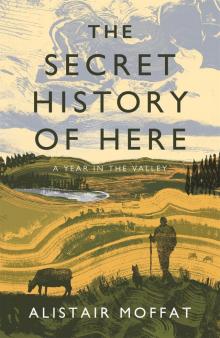 The Secret History of Here
The Secret History of Here The Night Before Morning
The Night Before Morning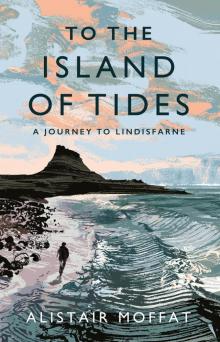 To the Island of Tides
To the Island of Tides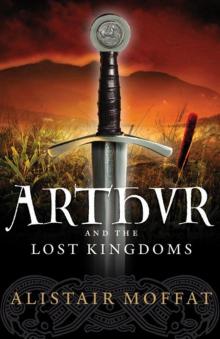 Arthur and the Lost Kingdoms
Arthur and the Lost Kingdoms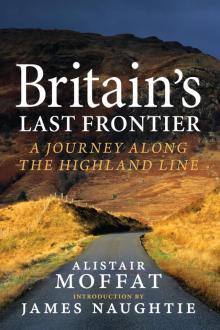 Britain’s Last Frontier
Britain’s Last Frontier The Faded Map: The Lost Kingdoms of Scotland
The Faded Map: The Lost Kingdoms of Scotland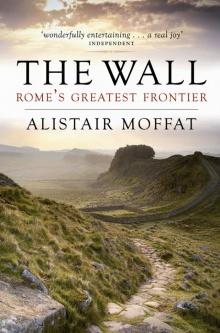 The Wall
The Wall